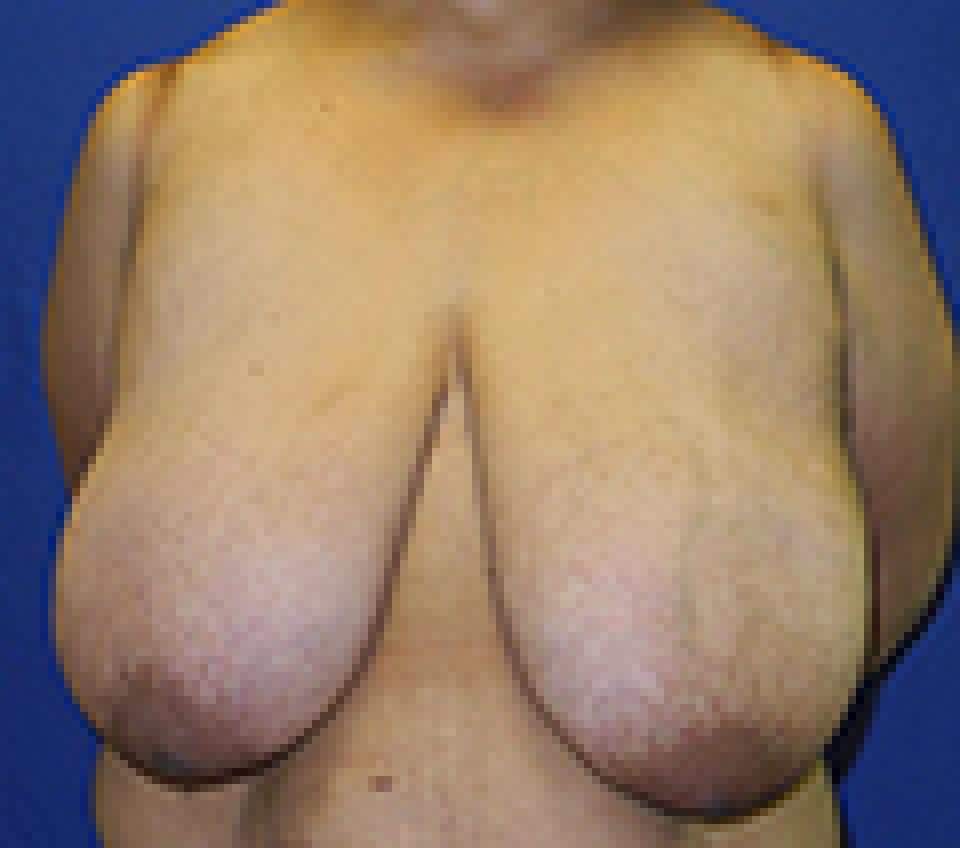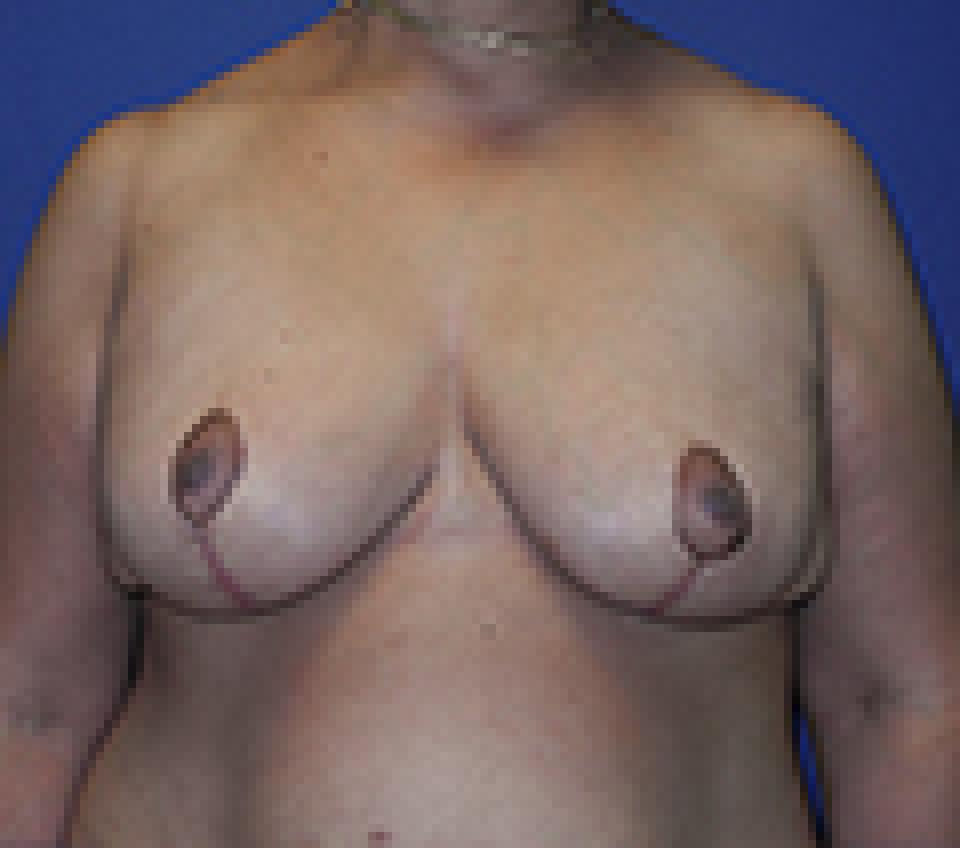Breast
The glamor of the breast is brought down to earth with a bump by the anatomists who define it as a “modified sweat gland.”
The normal location of the breast (mammary gland) is lateral to the midline, with its central point, the nipple, at the level of the 4th intercostal space, and in post-menarche youth extends in the female between the 2nd and 6th intercostal spaces, lying on the surface of the deep fascia that covers the pectoral muscles. With age and pregnancy the breast may become pendulous, but its base does not move.
The milk line from the axilla to the groin is a potential for nipples or vestigial breaststo be located elsewhere.
The center of the breast is marked by the colored conical nipple and its surrounding areola; elsewhere the breast is smooth, and usually in the female bears few hairs. The outer coat is normal skin, with a varying degree of fatty tissue in the subcutaneous layer.
The gland tissue is constructed rather like a grape vine; there are ovoid lobules which in lactation produce the milk; these empty into small ducts which are joined by others until the main stem duct, the ductus lactiferi is formed and leads to the nipple, with an opening much narrower than the duct itself, and usually with a distended lactiferous sinus immediately proximal to the opening. The gland tissue is structured into recognizable divisions, into lobules and lobes by fibrous septa connected to the subcutaneous fascia.
The space between the glandular tissue is filled with fiber and fat. The fibers are organised as supporting ligaments for the breast tissue, named after the anatomist and surgeon, Sir Astley Cooper, and giving cause for the vulgar medical student to refer to the pendulous breast as Cooper’s droop.
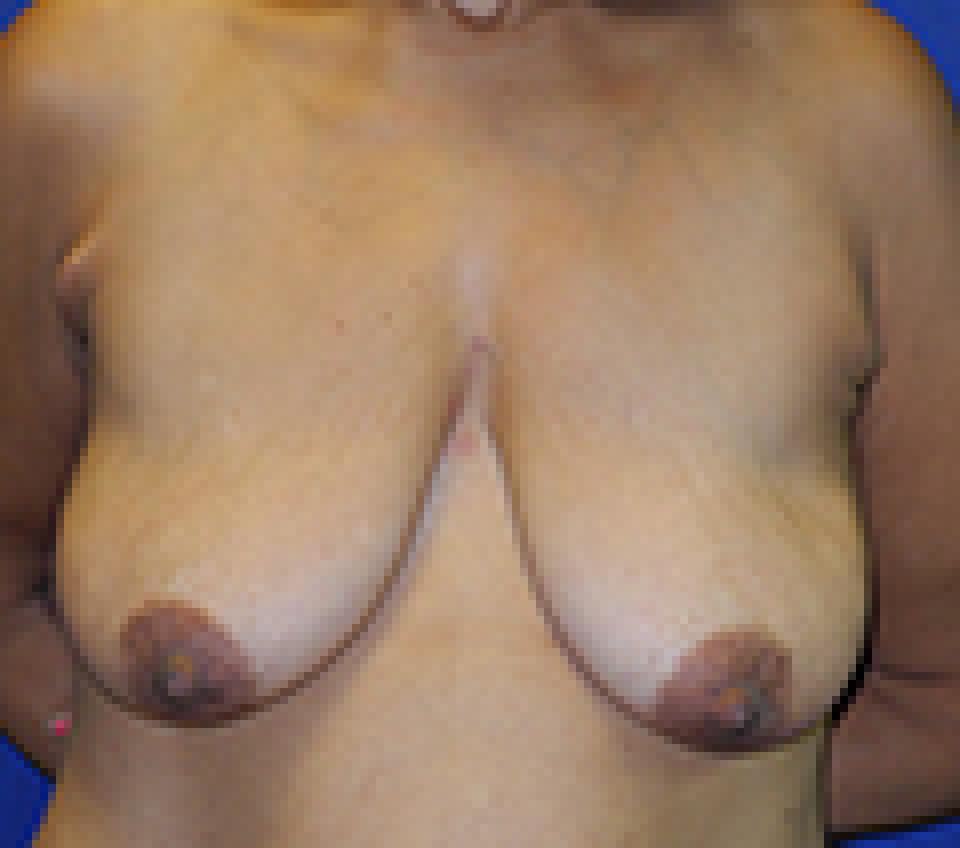 before
before
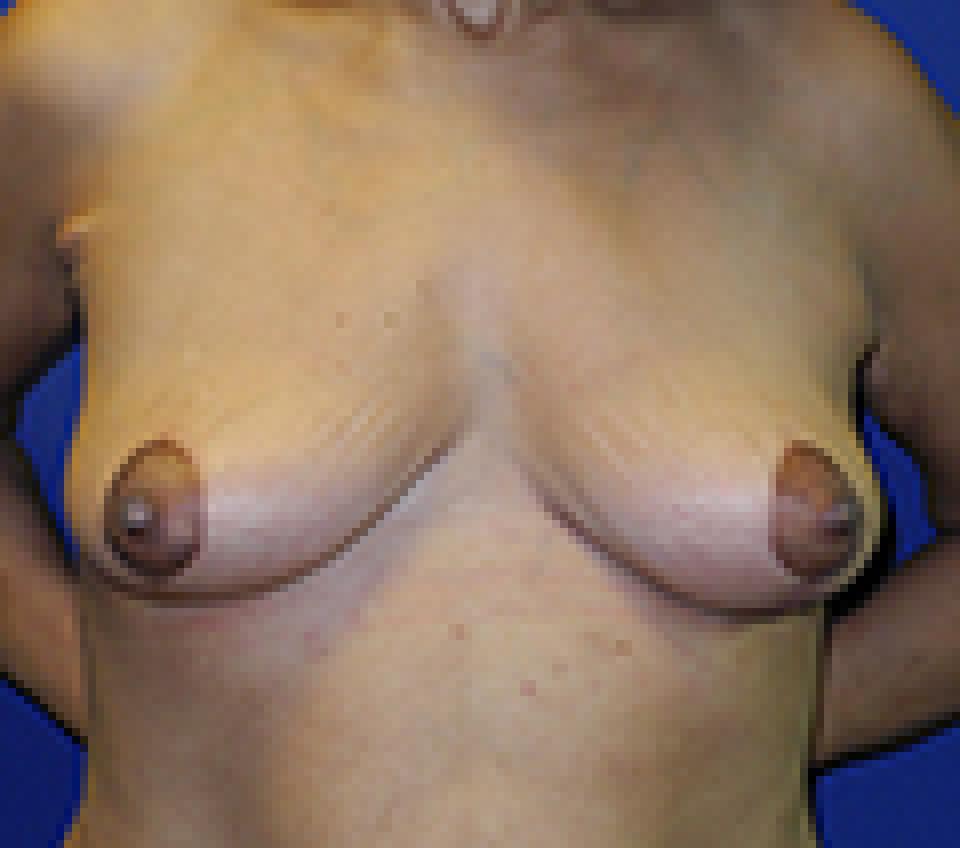 after
after
This 49 year old woman reached her plateau weight after losing 100 pounds following bariatric surgery. She is an excellent example of an individual whose breast tissue had been largely replaced with fat and as such, after massive weight loss, there was not enough breast tissue remaining to rearrange into a new breast shape that appeared typical of what one might expect after a breast lift or mastopexy.
From an aesthetic standpoint, this woman informed me that she would be satisfied with any improvement in her breast shape. Her primary goal, however, was to remove the extra skin that otherwise laid across her abdomen unless she wore an underwire bra. Her skin had lost a great deal of its elasticity and was unlikely to tolerate insertion of an implant to replace lost volume without sagging or becoming ptotic in a relatively short period of time. The use of commercially available skin substitutes, which would have allowed use of an implant, was not an option for her.
Her post surgical photographs show her result after I performed a breast lift or mastopexy using a short scar technique that leaves behind scars in the shape of a “lollipop.”
 before
before
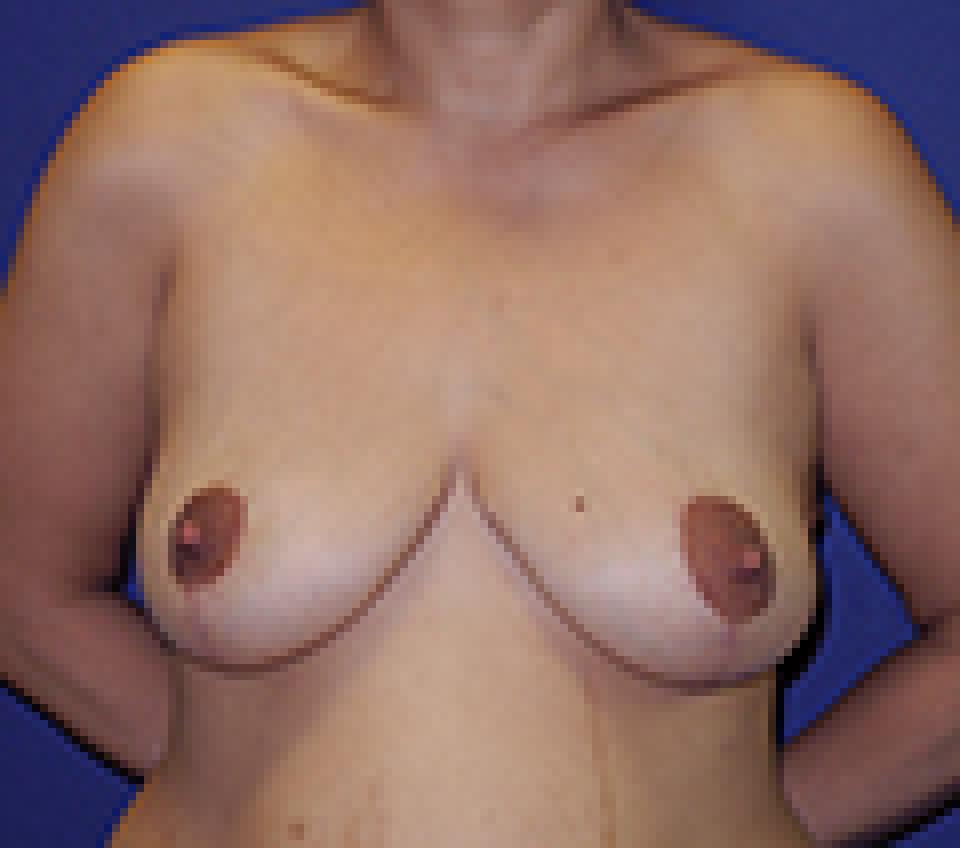 after
after
This 26 year old woman reached her plateau weight after losing 74 pounds following bariatric surgery. She had a breast lift or mastopexy using a technique which leaves behind scars in the shape of an “anchor.”
In some patients who lose a large amount of weight, the natural end point of the breast laterally disappears and the breast appears to continue around towards the back. This is what has happened to this woman.
In selected individuals who have this problem, the “anchor” scar type breast lift can be amended to remove that skin excess on the side of the body beneath the arm. This is the reason that I selected that particular breast lift technique in this woman even though the scars that it leaves behind are longer and more difficult to conceal in a swimsuit.
Looking at her photographs after surgery, it is obvious that there is no longer a "wing" of skin that continues laterally towards the back. Instead, the breast has a round shape and ends as it typically does before the side of the body that lies beneath the arm.
Unfortunately, there is now a visible scar there. This is an example of what I refer to as a “trade off” in plastic surgery. It is important to decide what is more important to each individual patient- a scar or better contour. Sometimes, it is not possible to have both!
 before
before
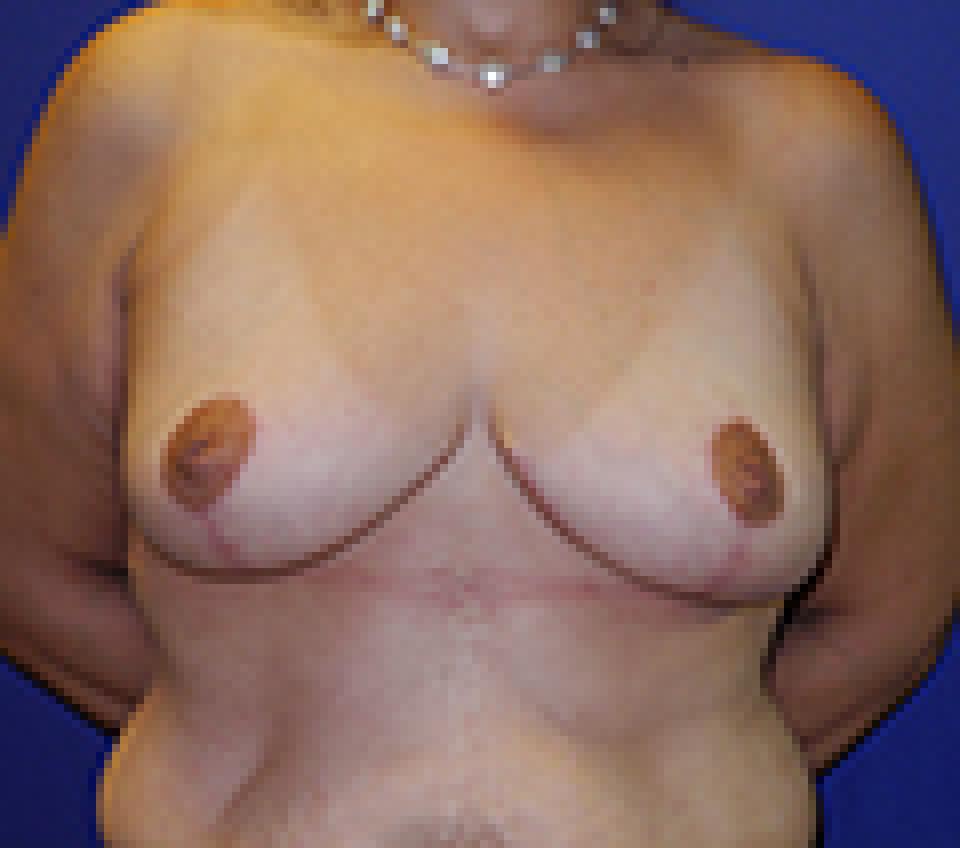 after
after
This 37 year old woman reached her plateau weight after losing 91 pounds following bariatric surgery. She had a breast lift or mastopexy using a technique which leaves behind scars in the shape of an “anchor.”
A breast lift or mastopexy is an operation which rearranges breast tissue so that the new breast shape is typically shorter and rounder. Unfortunately, patients who have lost a large amount of weight often do not have enough breast tissue remaining to rearrange into a naturally appearing breast. This woman was fortunate to have enough breast tissue after a 90 pound weight loss to achieve the breast shape that is visible in her post surgery photographs.
While an implant can provide the volume that is lacking after massive weight loss, the weight of the implant can also be very taxing on compromised skin, such as that which is typical after massive weight loss. Commercially available skin substitutes can provide the strength needed for successful use of implants in such cases.
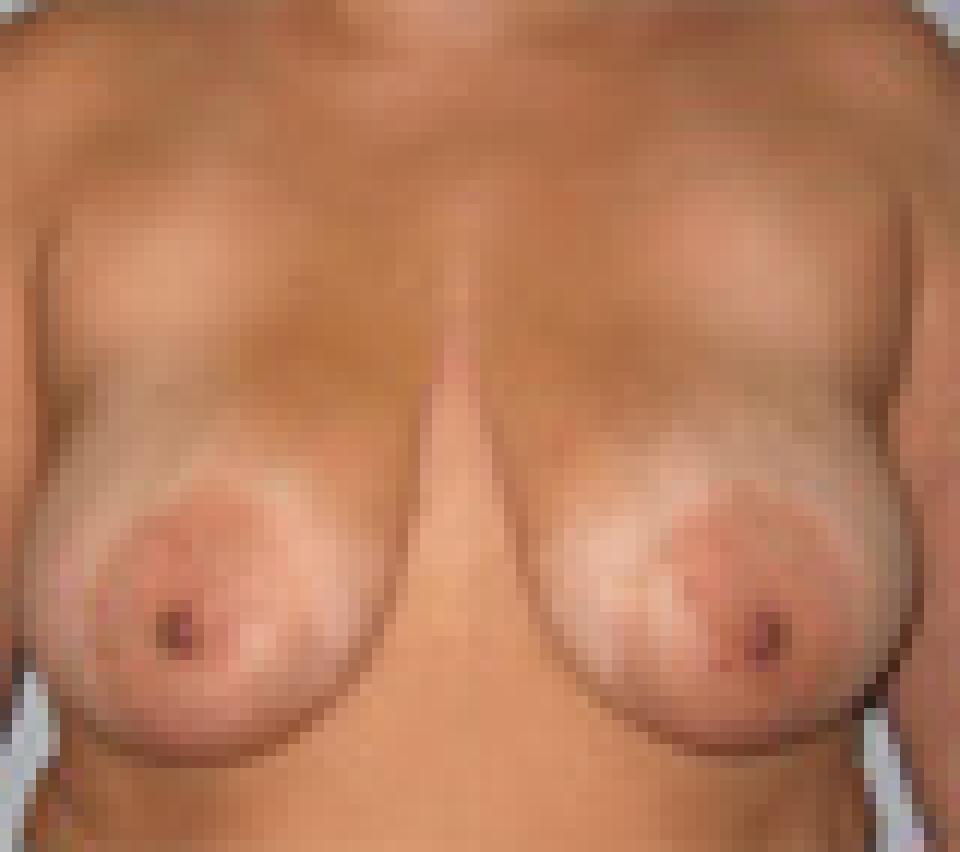 before
before
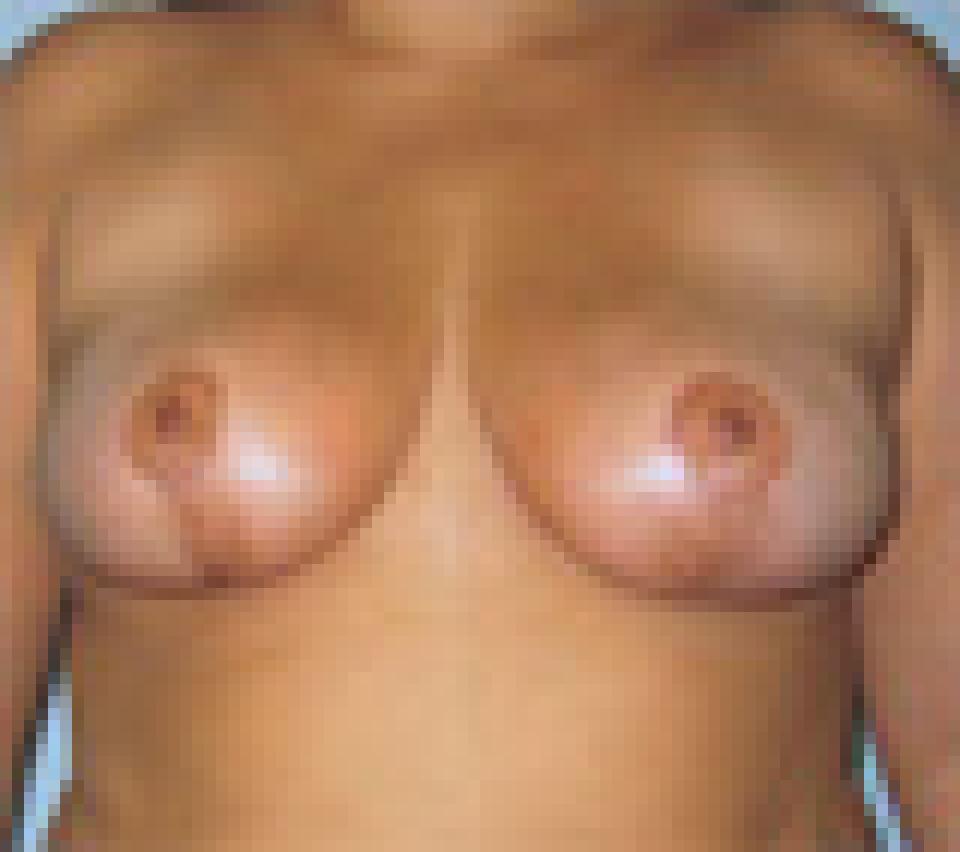 after
after
This case depicts a 41 year old woman who wished to have slightly smaller and shapelier breasts. She underwent breast reduction using an inverted T or "anchor" incision pattern.
Her post-operative photographs depict her appearance approximately two months after surgery.
With optimal design before surgery, the portion of this incision that runs along the fold of the breast is nearly completely hidden. Reduction of the areolar size for balance and proportion is an additional advantage of this procedure.
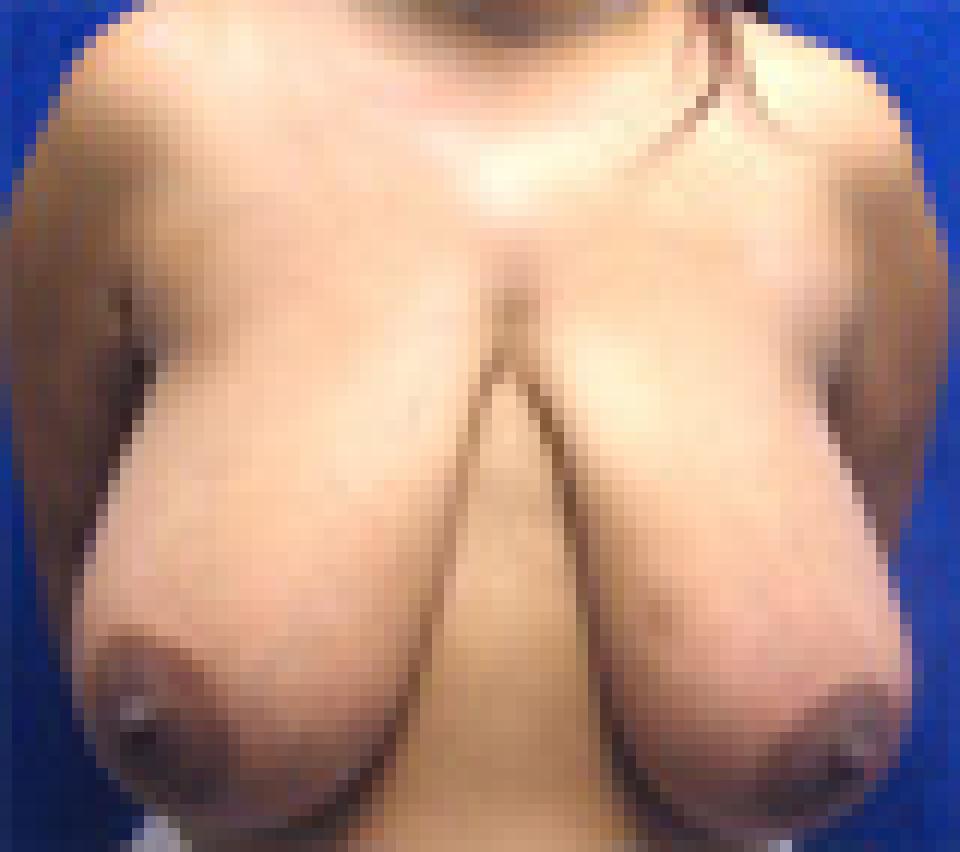 before
before
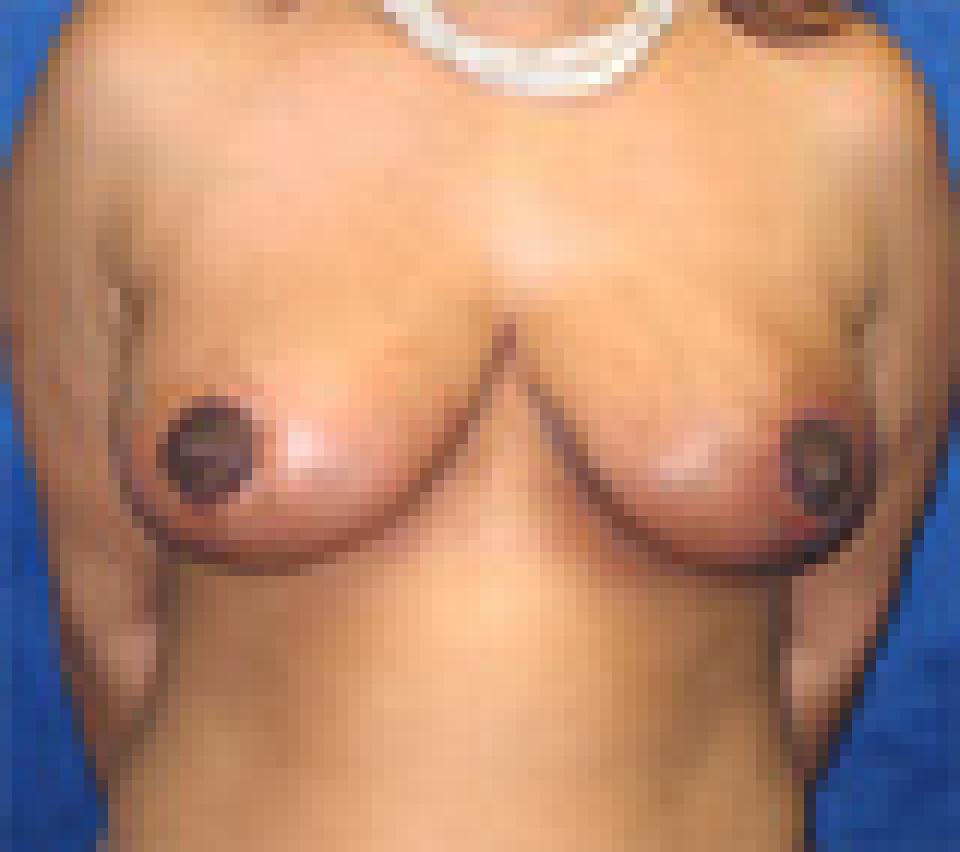 after
after
This case depicts a 29 year old woman with symptomatic breast hypertrophy who underwent a breast reduction using the inverted T or "anchor" incision pattern. Because of this individual's symptoms, medical insurance covered a portion of the costs of this procedure.
Not only did her symptoms improve following surgery, but she also gained a more aesthetically proportionate breast. Her post-operative photographs show her appearance approximately one month after surgery.
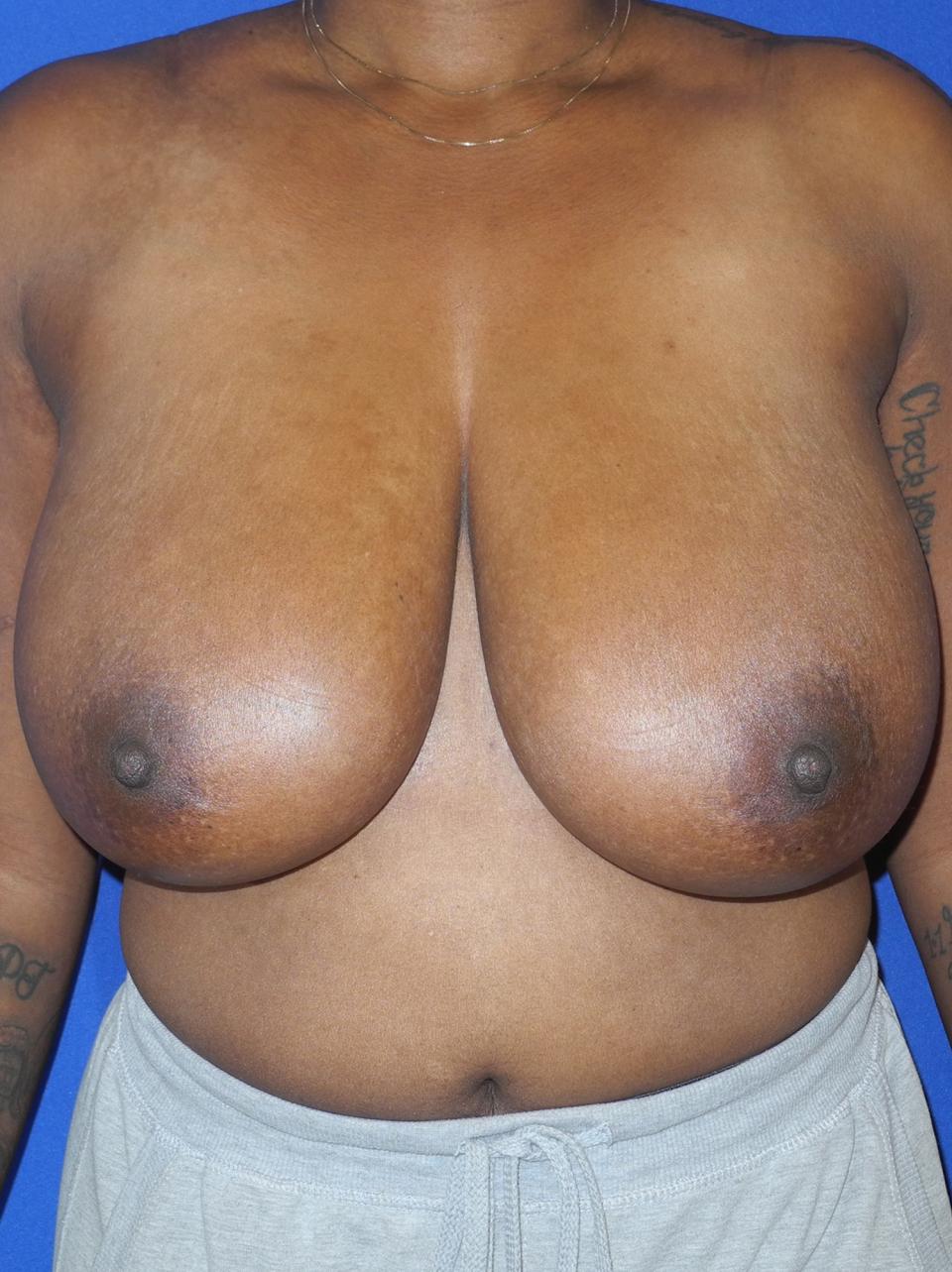 before
before
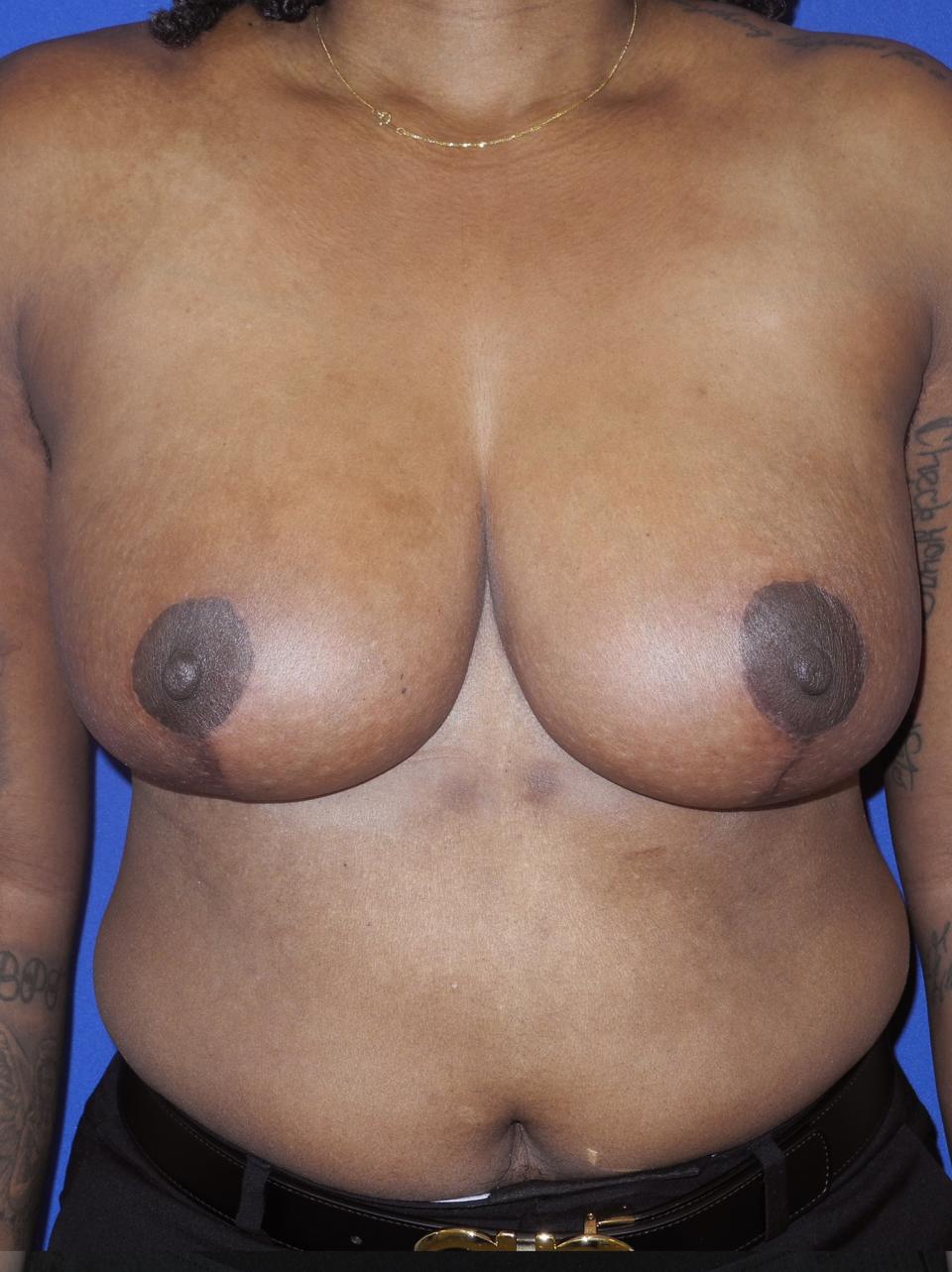 after
after
This individual suffered from gigantomastia and underwent a breast reduction in which almost three and a quarter pounds of weight was removed from the breasts.
The breast reduction was performed in a manner that so that the breasts were shortened in length and lifted. This photograph was taken at approximately four months following surgery. No liposuction was performed in this procedure.
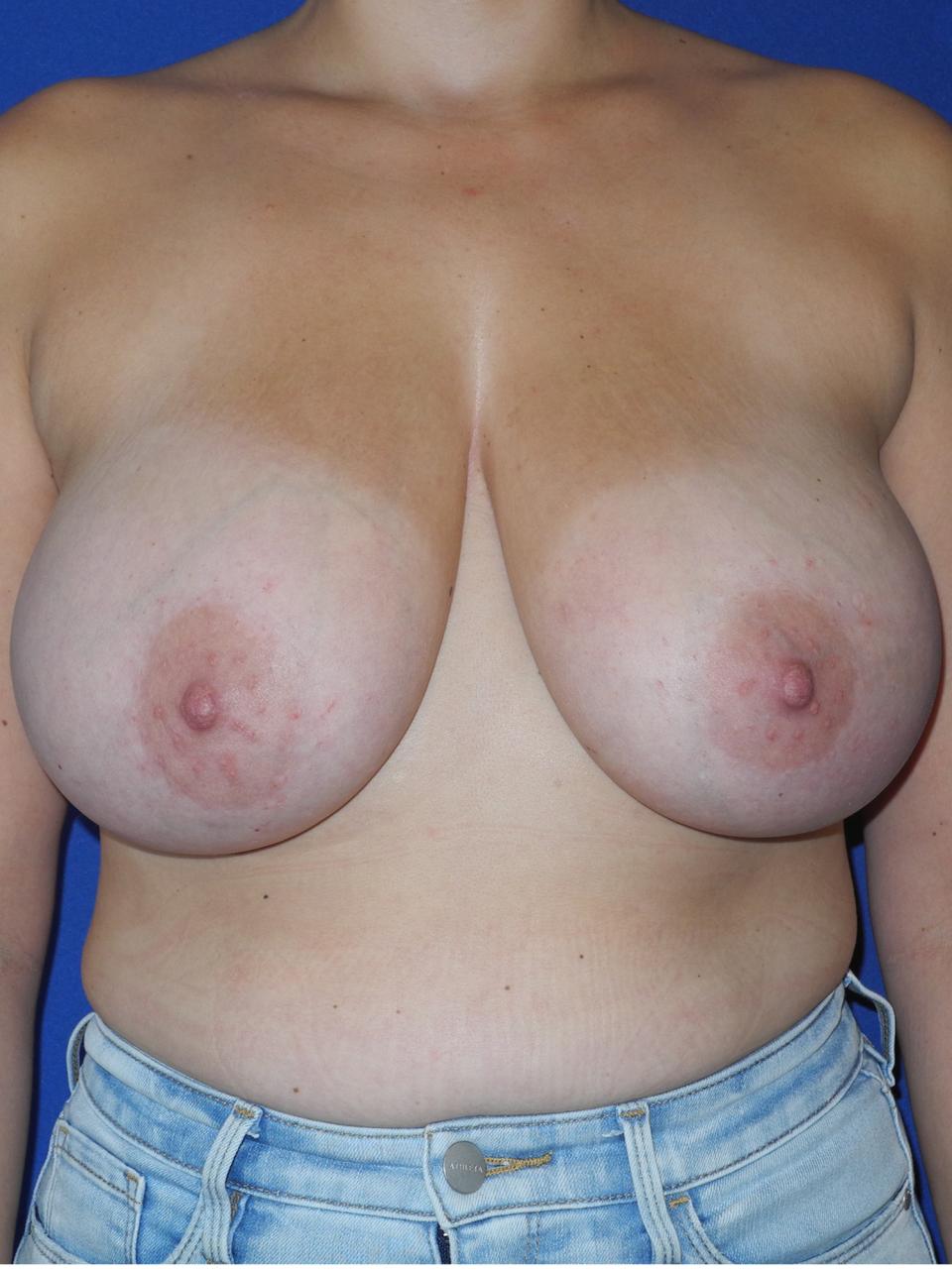 before
before
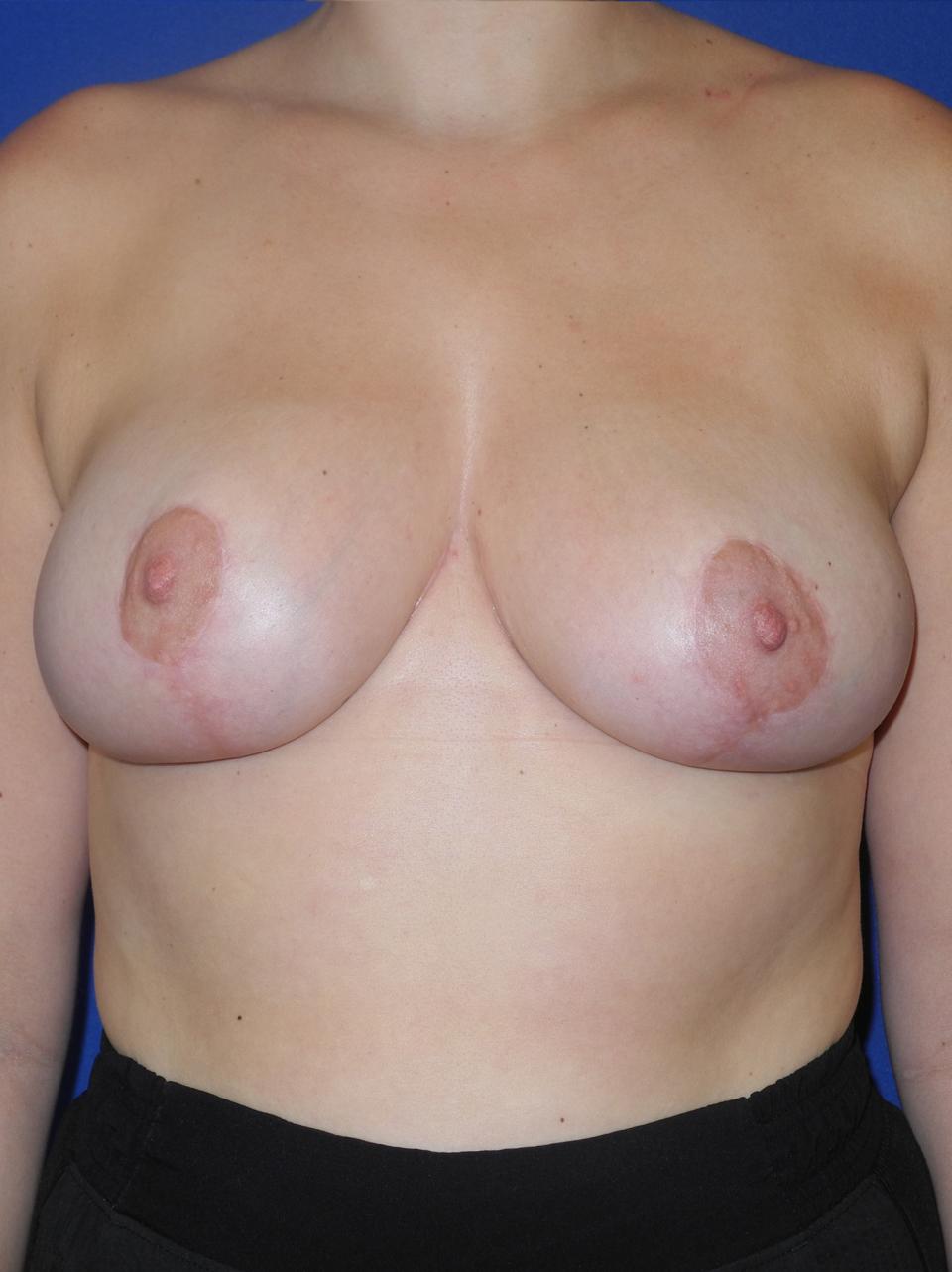 after
after
This individual underwent a breast reduction in which almost two and a quarter pounds of weight was removed from the breasts. The breasts were shortened in length and lifted to give a rounder appearance. This photograph was taken at approximately four months following surgery.
Liposuction of the tissue that lies between the upper outer quadrant of the breast and the upper arm as well as the side of the body directly beneath the arm pit area can decrease bra band size and give the breast a narrower appearance after surgery.
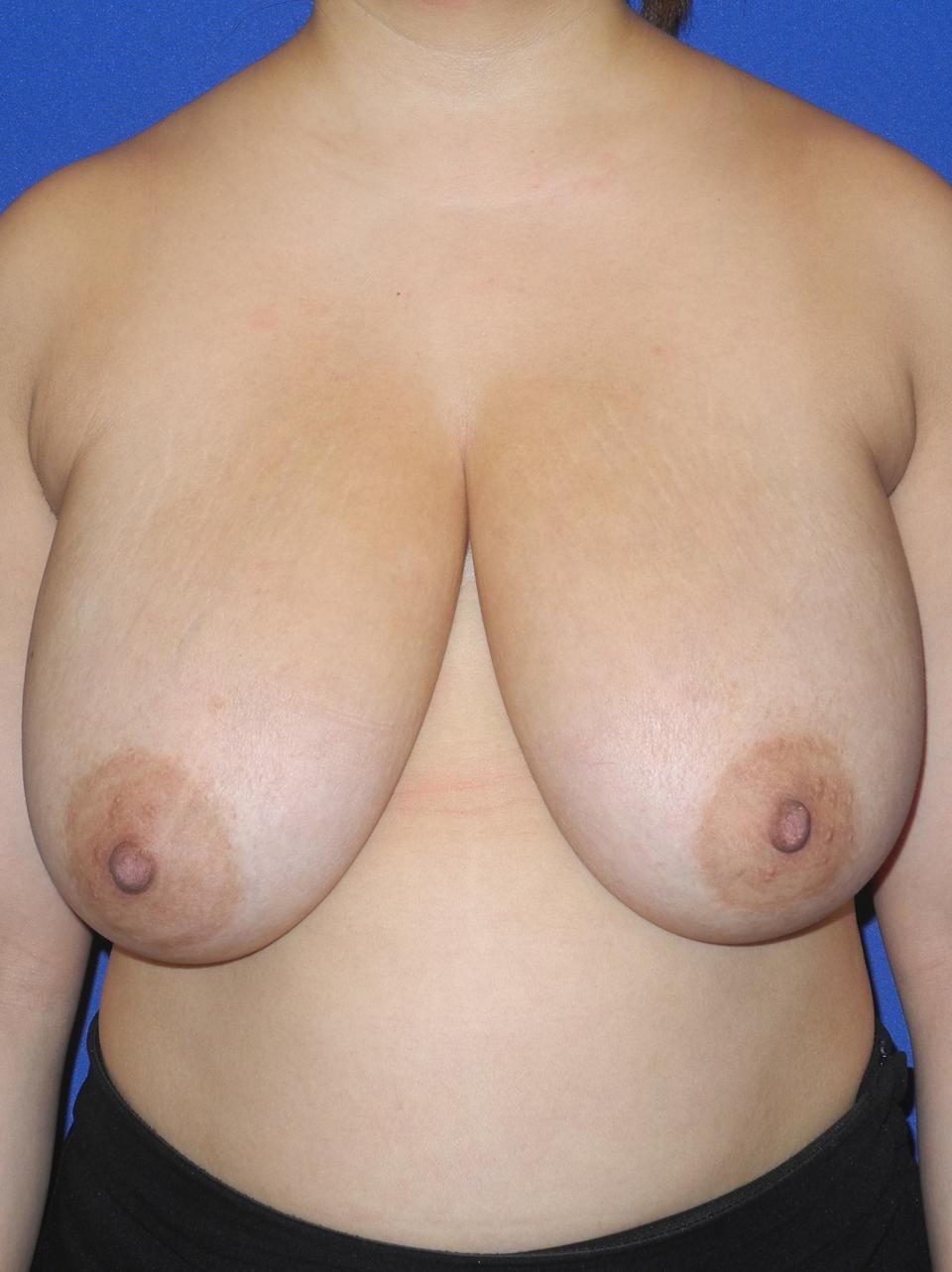 before
before
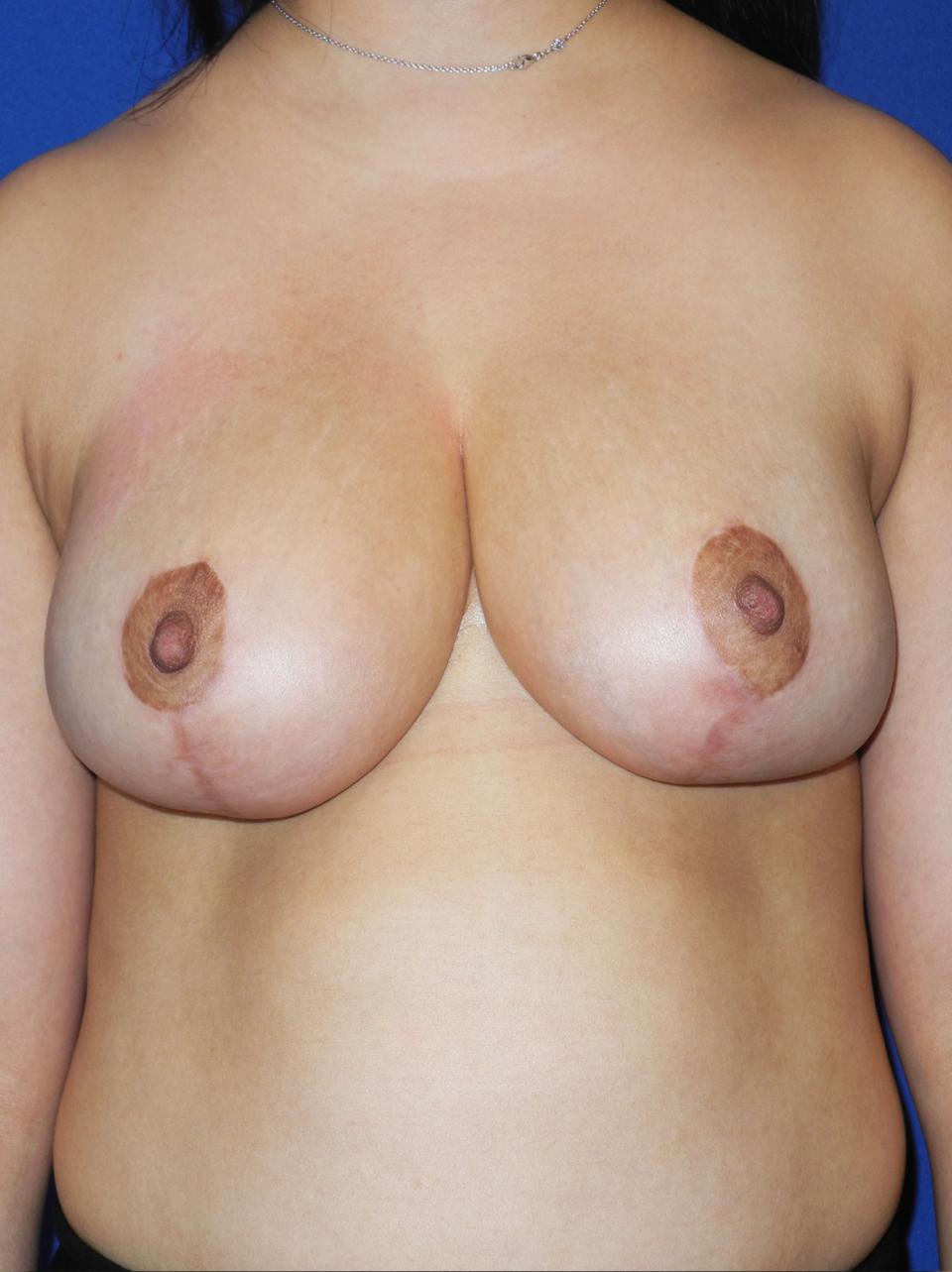 after
after
This individual suffered from large breasts, breast droop and extra tissue in the breast tail and armpit area. She underwent a breast reduction in which slightly more than two and a half pounds of weight was removed from the breasts.
With integrated breast and torso contouring, the breasts are not only shortened in length but then contoured with liposuction to give a rounder appearance. These techniques allow a breast reduction to look like a breast lift. This photograph was taken at approximately five months following surgery. Scars, while still visible, are still expected to mature and fade over the next year.
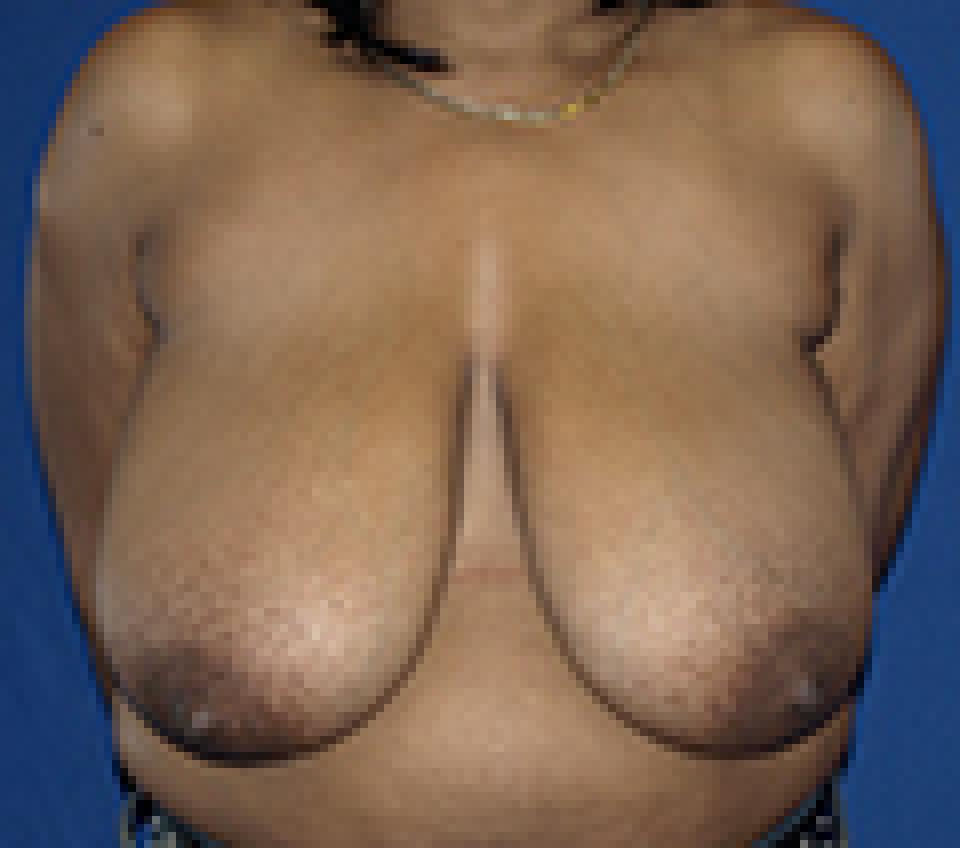 before
before
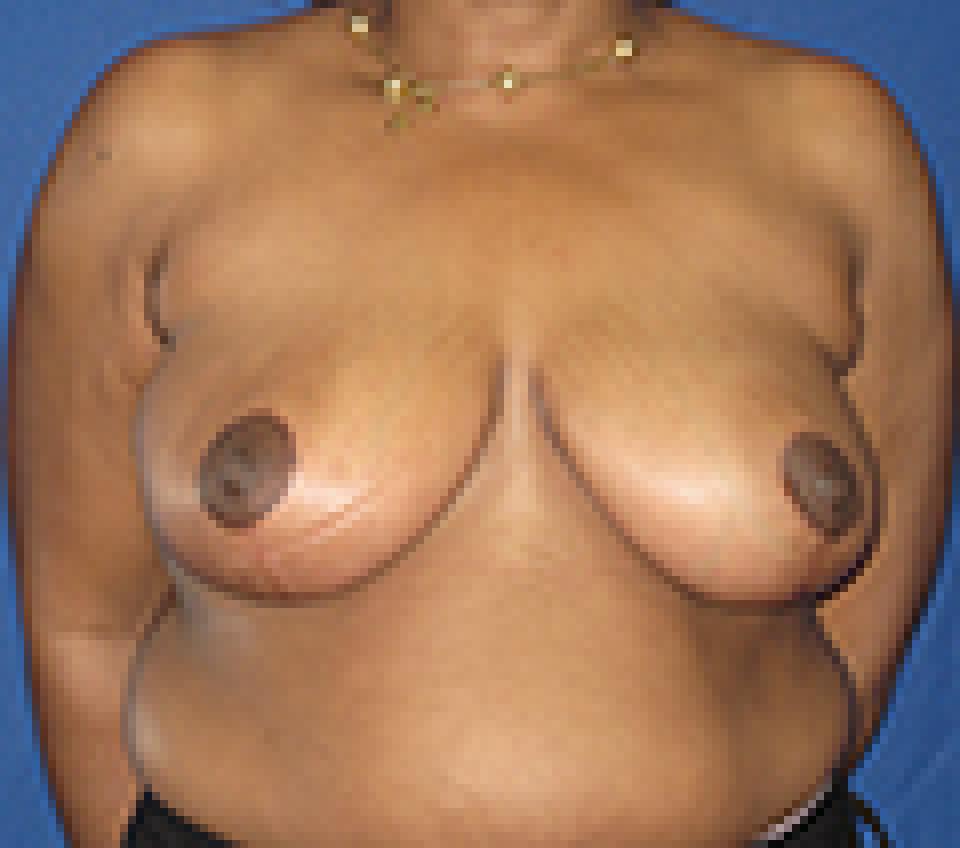 after
after
This 39 year old woman underwent breast reduction in which approximately one and a half pounds of tissue was removed from each breast.
I view breast reduction as a two part process: first, tissue is removed to decrease the size and weight of the breasts; second, the remaining tissue is rearranged to create a new breast that has an aesthetically appropriate appearance. This rearranging process is very similar to what is done in a breast lift.
In this individual’s case, the incisions used to perform the breast reduction were of the “anchor” type and the incisions healed well.
Questions Related to Breast
Dr. Belsley's Philosophy of Breast Augmentation
When it comes to deciding what approximate breast size you wish to achieve, the best advice I can give you is that you should be guided by your physical frame. Indeed, you may in fact be limited by it. In my practice, I select implants based upon your chest measurements, the quality of your breast skin and the size of your breasts prior to surgery.
I perform breast augmentation through a peri-areolar or inframammary approach and I place that vast majority of implants at least partially beneath the pectoralis muscle. My patients are welcome to select either saline or silicone filled breast implants. Silicone filled implants can in some cases achieve a more natural feel and may be a particularly attractive option for women with less breast tissue prior to surgery.
More >>Breast Reduction Ideals
Once I have removed enough tissue to achieve an appropriate breast size, the nipple and areola are repositioned, which means that the new, smaller breast also has a “lifted” appearance. While this is not the primary goal of this procedure, it is a fantastic secondary benefit of it. I strive to achieve the same aesthetic standards when I perform medically necessary breast reduction as I do for cosmetic breast lift or mastopexy. Since stretching of the areola is a common problem in patients with very large breasts, I typically reduce the size of the areola during breast reduction.
More >>Dr. Belsley's Philosophy of Breast Lift (Mastopexy)
In my practice, I perform breast lifts using incisions that result in a “lollipop” shaped scars. With good care and a bit of luck, these incisions heal well and the scars are difficult to see from a distance. Nevertheless, a woman who undergoes a cosmetic breast lift must be prepared for scars that are visible. This is one example of a “trade-off” in plastic surgery and of course, there are many others. This is one, however, that I feel is more than worthwhile in appropriate candidates.
More >>Dr. Belsley's Philosophy of Breast Revision
I apply the same criteria to patients who have had their surgery elsewhere as I do to my own patients. I am typically reluctant to re-operate on a breast augmentation patient for minor issues, because each time one undergoes revision, many of the risks of surgery tend to be multiplied. This is why I spend a great deal of time discussing size preferences and the likely outcome of surgery with my patients pre-operatively. It is said frequently that the most common reason for re-operation of the breasts in women who have had breast augmentation surgery is that they wish to “go bigger.” Ultimately, I feel that this is a poor reason to undergo repeated surgical procedures that can only result in more scar tissue, which is unpredictable, and thinning of the native tissues, which are necessary to cover the implant and provide a natural looking result. I encourage patients to think carefully about the risks of revision in cases where there is not a major problem.
More >>Dr. Belsley's Philosophy of Male Breast Reduction
Treatment for gynecomastia can be approached in several ways and is largely dependent upon the “type” of tissue in the chest that needs to be reduced. A physical examination is necessary to create a plan for treatment. Most of the time, I treat these individuals with a combination of ultrasonic liposuction and removal of glandular and breast tissue through a small incision on the border of the areola. Some individuals will be able to achieve excellent results with ultrasonic liposuction alone. Others, may require more extensive incisions. My goal is to give you a natural looking masculine shape that is well proportioned with the rest of your body using the shortest incision possible.
More >>